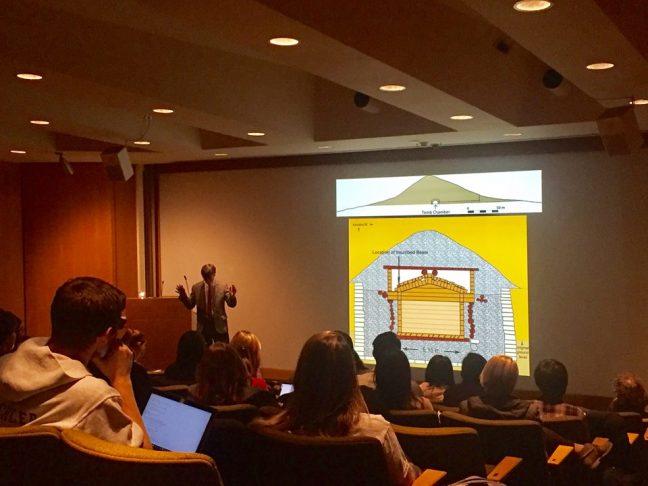King Midas’ curse of turning everything he touched to gold might not have been as much of a fable as many theorize.
C. Brian Rose, Professor of Archaeology at the University of Pennsylvania and Director of Excavations at Gordion, presented the story of uncovering Midas’ tomb under a tumulus in Gordion, a city in the Phrygia kingdom, Tuesday evening at the Conrad A. Elvehjem Building.
In the Gordion Archeological Project, Rodney Tomb uncovered Midas’ tomb. The project was sponsored by the University of Pennsylvania and other institutions.
The people who buried Midas never wanted his tomb to be raided, and because they and Midas were rich, they expected people would try.
The tomb was placed off-center of the hill so people who drilled directly down couldn’t find it, he said. The tomb, which was six by seven meters and four meters high, was further protected by pine walls, an outside coat of juniper, followed by limestone and finished with another wooden box.
Rose called the tomb the “oldest standing wood house.” But the tomb was not perfectly intact when Tomb opened it. Tomb and his mining team drilled at least 100 times into the tumulus before hitting a resistance: the tomb.
The team found no gold inside which surprised Rose since the people of Gordion were extremely wealthy. They could have easily left the dead king with money.
After conducting further archaeological research on the tomb, Rose concluded the clothing on Midas was treated with a chemical. The chemical made the clothing look golden, and he hypothesized this is why Midas is known as the king with the golden touch.
“It’s just a theory … but an attractive one,” Rose said.
He called the people of Gordion a golden, elite race.
In his studies, Rose also noticed Midas’ head was misshapen. When Midas was an infant, his head was wrapped, bandaged and boarded to make his head look different than everyone else’s. An unusual head, Rose said was associated with phenomenal intelligence.
Also in the tomb were bronze bowls covered in wax with names engraved onto them. People left their best dishes at Midas’ funeral, Rose said. They also enjoyed a meal together in his name, and archaeologists found remnants of their last meal in the bowls.
Since those people would never eat from the bowls again, they found no reason to wash them.
“There was no reason to focus on cleanliness,” Rose said.
The archaeologists found lamb and lentil stew and an alcoholic mixture of wine, beer, honey and saffron in the bowls.
Although Rose finds the drink repulsive, Dogfish Head Brewery created the beer “Midas Touch” in honor of the drink.
Perhaps Midas still reaches everyone today with his golden touch.


